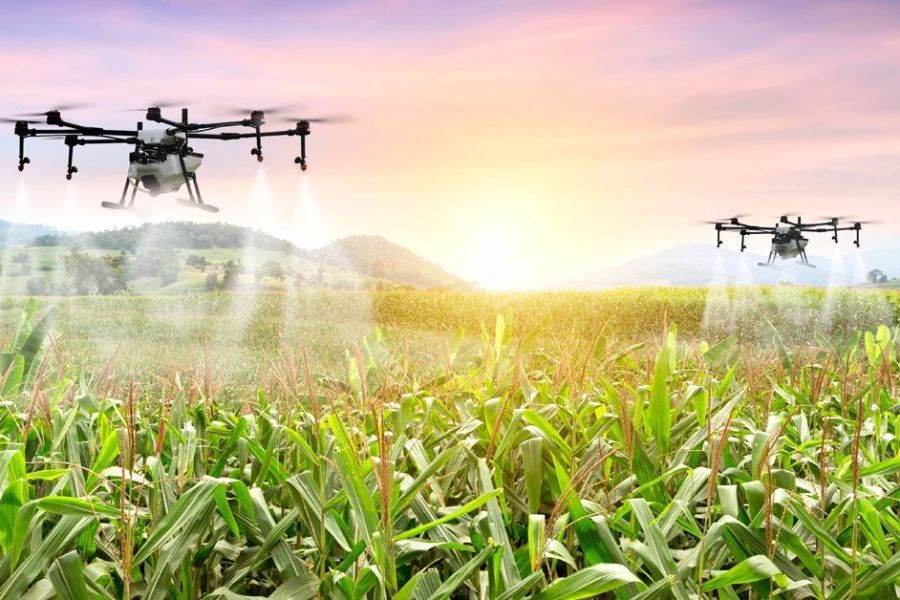New Zealand's agricultural sector has long been a cornerstone of the country's economy, contributing significantly to its GDP and employing a large portion of the workforce. However, the push towards agricultural innovation, while promising enhanced productivity and sustainability, conceals hidden costs that can impact investors and stakeholders profoundly. Understanding these costs is crucial for venture capitalists looking to make informed investment decisions in New Zealand's agricultural sector.
The Economic Impact of Agricultural Innovation in New Zealand
In recent years, New Zealand has seen a sweeping transformation in its agricultural landscape, driven by technological advancements and innovative practices. The Ministry of Business, Innovation and Employment (MBIE) reports that technology adoption in agriculture has increased productivity by approximately 25%. Such advancements range from precision farming technologies to genetically modified crops, promising increased yields and reduced environmental impact. However, these innovations come with significant economic considerations that are often overlooked.
Case Study: Precision Agriculture in Canterbury
Precision agriculture, which involves the use of technology to monitor and manage crop production, has been widely adopted in regions like Canterbury. This method utilizes GPS and IoT devices to optimize field-level management, resulting in a 20% increase in crop yield and a reduction in water usage by 15%. However, the initial setup costs and ongoing maintenance can be daunting, requiring substantial capital investment.
Unveiling the Hidden Costs
While the benefits of agricultural innovations are widely touted, the hidden costs can be significant, impacting both the short-term and long-term financial health of agricultural businesses. These costs can be divided into several categories:
- Initial Investment: The upfront cost of adopting new technologies is a significant barrier. For example, the installation of precision agriculture systems can cost anywhere from NZD 50,000 to NZD 100,000 per farm.
- Maintenance and Upkeep: Ongoing costs for maintaining technological systems can erode profit margins. Unexpected repairs and software updates add to these expenses.
- Training and Adaptation: Farmers must be trained to use new technologies effectively, which requires time and money. This can result in a temporary dip in productivity as workers adapt.
- Regulatory Compliance: New technologies often come with new regulatory requirements. Compliance can be costly and time-consuming, particularly for smaller operations.
Contrasting Perspectives: Benefits vs. Costs
The debate surrounding agricultural innovation often centers on the balance between its benefits and costs. Proponents argue that the long-term gains, such as increased efficiency and sustainability, outweigh the initial expenses. Critics, however, point out that these innovations can increase economic inequality, as small-scale farmers may struggle to afford the necessary investments.
Pros and Cons of Agricultural Innovations
Pros:
- Increased Efficiency: Technologies like drones and sensors optimize resource use, leading to higher yields.
- Environmental Benefits: Innovations can reduce the carbon footprint of farming operations.
- Market Competitiveness: Advanced technologies help New Zealand's agricultural products remain competitive globally.
Cons:
- High Initial Costs: The capital required for new technologies can be prohibitive for many farmers.
- Economic Disparity: Smaller farms may be unable to compete with larger operations that can afford these innovations.
- Uncertain ROI: The return on investment for new technologies is not guaranteed, with risks exacerbated by market volatility.
Myths and Misconceptions
Despite the promise of agricultural innovations, several myths persist:
- Myth: All technological advancements lead to immediate profit increases. Reality: ROI can be delayed as farmers adapt to new systems and regulations.
- Myth: Small farms can easily adopt new technologies. Reality: Smaller operations often lack the capital and resources to implement high-tech solutions.
- Myth: Technological innovations have a uniform impact. Reality: The effectiveness of innovations varies widely depending on the type of crop and regional factors.
Future Trends in New Zealand's Agricultural Sector
Looking forward, New Zealand's agricultural sector is poised for further transformation. According to a report from the University of Auckland, by 2030, it is expected that 50% of farms in New Zealand will adopt some form of automation. This trend will likely lead to increased productivity but also necessitate careful consideration of the associated costs and impacts on the rural workforce.
Final Takeaways and Actionable Insights
- Investment Opportunities: Venture capitalists should look for opportunities in companies developing affordable and scalable agricultural technologies.
- Risk Assessment: It's crucial to conduct thorough risk assessments to identify potential financial pitfalls associated with agricultural innovations.
- Collaborative Efforts: Encourage partnerships between tech companies and agricultural businesses to share knowledge and reduce costs.
- Policy Engagement: Engaging with policymakers can help shape regulations that support sustainable and equitable innovation adoption.
Conclusion
The hidden costs of New Zealand’s agricultural innovations present both challenges and opportunities for investors and stakeholders. By understanding these costs and strategically navigating them, venture capitalists can unlock significant value while contributing to the sustainable development of New Zealand's agricultural sector. What insights or strategies do you believe are crucial for navigating these challenges? Share your thoughts below!
Frequently Asked Questions
How does agricultural innovation impact New Zealand's economy? Agricultural innovation enhances productivity and environmental sustainability, contributing significantly to GDP. However, the high costs of technology adoption can strain smaller farms, impacting economic disparity.
What are the biggest misconceptions about agricultural innovation? A common myth is that all farms can easily adopt new technologies. In reality, smaller farms often lack the resources for such investments, leading to economic disparity.
What are the best strategies for implementing agricultural innovations? Experts recommend starting with scalable, cost-effective technologies and fostering partnerships between tech developers and agricultural businesses to share knowledge and resources effectively.
Related Search Queries
- New Zealand agricultural technology trends
- Hidden costs of farming innovations
- Precision agriculture in New Zealand
- Impact of technology on New Zealand farming
- Future of agriculture in New Zealand
- Challenges of adopting agricultural innovations
- Investing in New Zealand agriculture
- Environmental impact of agricultural technology
- Economic disparity in New Zealand farming
- Policy changes in New Zealand agriculture


































Guilty Fashion
8 months ago